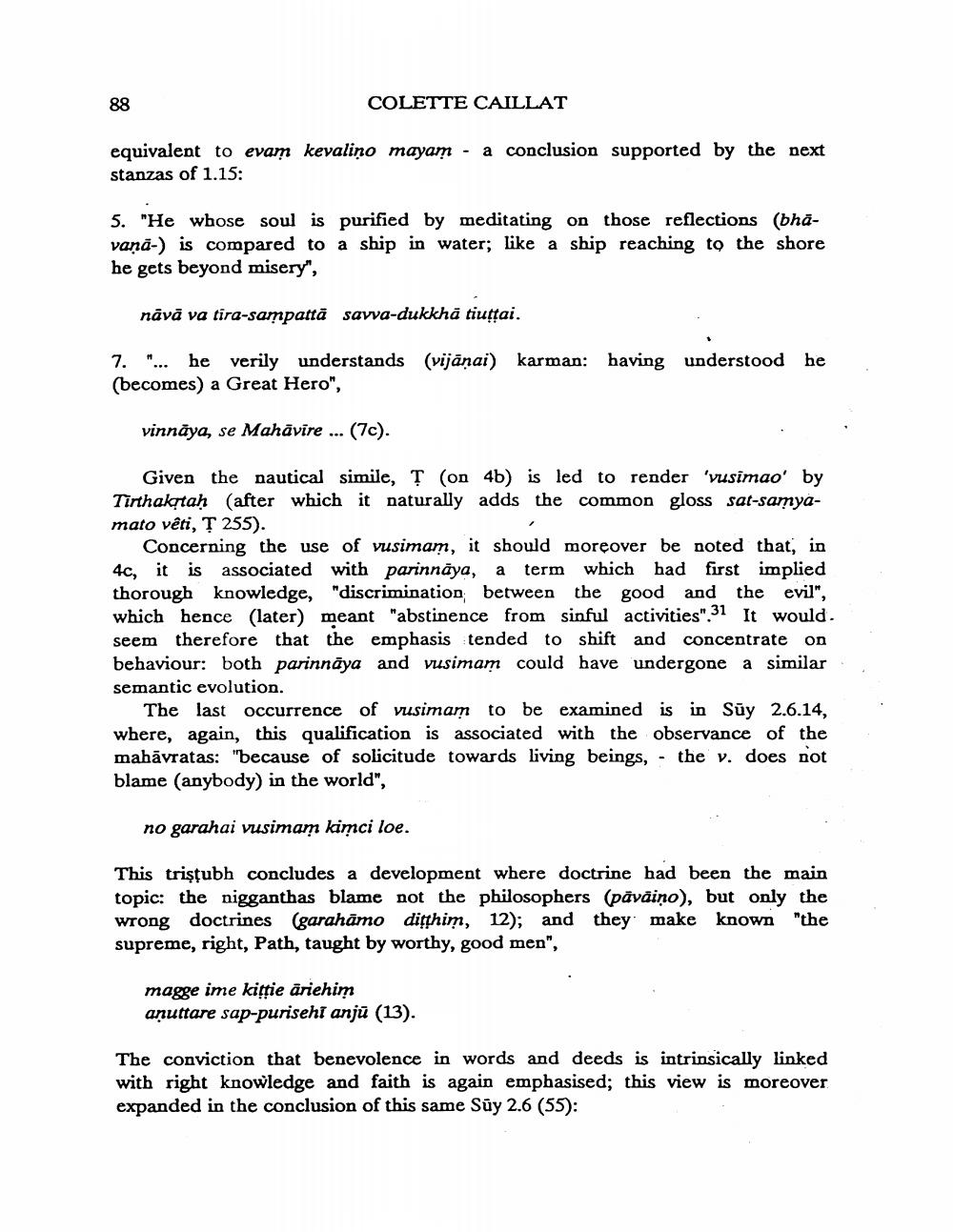Book Title: Esa Dhamme Vusunao Such Is Law Of Sage Author(s): Colette Caillat Publisher: Colette Caillat View full book textPage 8
________________ 88 COLETTE CAILLAT equivalent to evam kevalino mayam - a conclusion supported by the next stanzas of 1.15: 5. "He whose soul is purified by meditating on those reflections (bhavana-) is compared to a ship in water; like a ship reaching to the shore he gets beyond misery", nāvā va tira-sampatta savva-dukkhā tiutai. 7. "... he verily understands (vijānai) karman: having understood he (becomes) a Great Hero", vinnāya, se Mahāvire ... (7c). Given the nautical simile, Ţ (on 4b) is led to render 'vusimao' by Tirthaktah (after which it naturally adds the common gloss sat-samyamato vêti, Ţ 255). Concerning the use of vusimam, it should moreover be noted that, in 4c, it is associated with parinnāya, a term which had first implied thorough knowledge, "discrimination between the good and the evil", which hence (later) meant "abstinence from sinful activities".31 It would. seem therefore that the emphasis tended to shift and concentrate on behaviour: both parinnāya and vusimam could have undergone a similar semantic evolution. The last occurrence of vusimam to be examined is in Sūy 2.6.14, where, again, this qualification is associated with the observance of the mahāvratas: "because of solicitude towards living beings, - the v. does not blame (anybody) in the world", no garahai vusimam kimci loe. This triştubh concludes a development where doctrine had been the main topic: the nigganthas blame not the philosophers (pāvāiņo), but only the wrong doctrines (garahāmo disthim, 12); and they make known "the supreme, right, Path, taught by worthy, good men", magge ime kitie āriehim aņuttare sap-purisehi anju (13). The conviction that benevolence in words and deeds is intrinsically linked with right knowledge and faith is again emphasised; this view is moreover expanded in the conclusion of this same Suy 2.6 (55):Page Navigation
1 ... 6 7 8 9 10 11 12 13 14 15 16
